Some fish don’t just survive—they laugh in the face of danger.
Boiling hot springs? Freezing Arctic streams? Lakes so salty they could pickle a cucumber in seconds? These aquatic outlaws don’t just show up—they thrive.
While most creatures tap out when the going gets tough, these fish dig in their fins and say, “Bring it.” From oxygen-starved mud puddles to toxic sludge pits, they’ve evolved to outwit nature’s harshest curveballs.
Forget goldfish bowls and clear mountain streams. These survivors come from places that look more like alien planets than peaceful ponds.
Let’s dive into 14 fish species that shrugged off extinction, bent the rules of biology, and made their homes in waters so extreme, even bacteria might think twice.
Devil’s Hole Pupfish
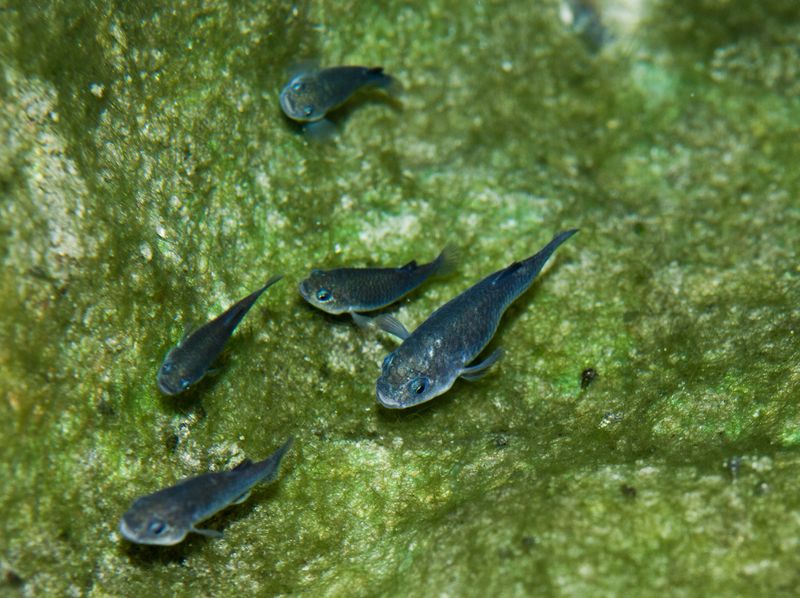
In the blistering heat of Nevada’s Devil’s Hole lives the tiny Devil’s Hole Pupfish. This brightly colored fish, barely an inch long, thrives in water temperatures reaching over 90°F. Found exclusively in this remote geothermal pool, it fascinates scientists with its adaptation to extreme heat.
The pupfish’s survival hinges on limited resources in an environment where few others would endure. Its diet mainly consists of algae growing in the isolated waters. This remarkable species exemplifies life’s tenacity in the face of challenging conditions. Visitors to Devil’s Hole marvel at this tiny survivor of harsh extremes.
Antarctic Icefish

In the frigid waters of Antarctica, the Icefish reigns supreme. This fish lacks hemoglobin, giving its blood a translucent appearance, an adaptation unique to surviving freezing temperatures. By reducing the energy needed to move oxygen around its body, it thrives where other fish might freeze or suffocate.
The Icefish navigates its icy kingdom with ease, feeding on krill and other small organisms. Its ability to absorb oxygen directly through its skin further enhances its survival. As climate change threatens polar habitats, the Icefish symbolizes resilience amid environmental shifts.
Mangrove Rivulus
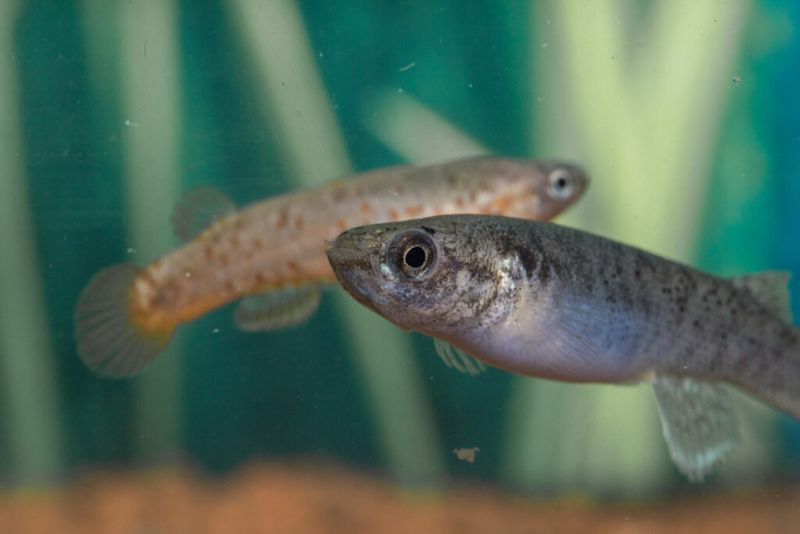
Mangrove Rivulus, a master of adaptation, inhabits the fluctuating environments of mangrove swamps. This fish can survive both in water and on land for extended periods, breathing through its skin when necessary. Its ability to tolerate varying salinity levels showcases its remarkable resilience.
Living in small pools and burrows, it often jumps between habitats to escape predators and find food. This amphibious lifestyle underscores its unique survival strategy. As mangrove habitats face human threats, the Mangrove Rivulus stands as a testament to life’s adaptability and the intricate balance of ecosystems.
Four-Eyed Fish
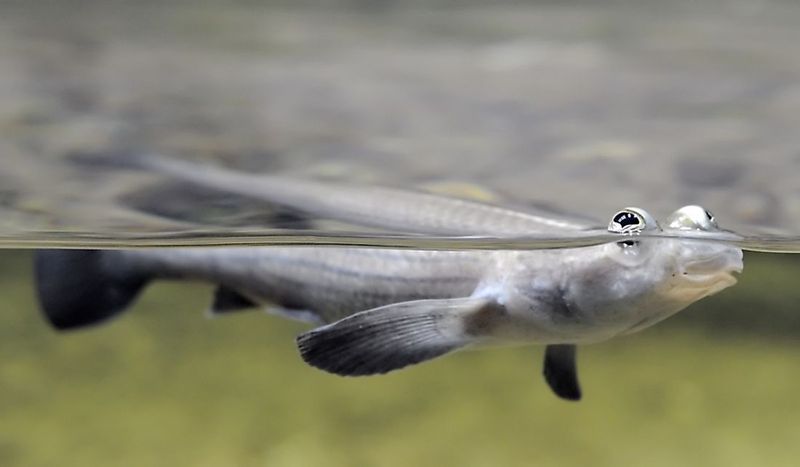
With its unique eye structure, the Four-Eyed Fish thrives in the muddy waters of South America’s tropical rivers. This peculiar fish has eyes divided into two parts, allowing it to see above and below the water simultaneously—an advantage for spotting predators and prey.
This dual vision enables the fish to navigate seamlessly between terrestrial and aquatic worlds. As it glides gracefully over the water’s surface, it feeds on insects and small fish. The Four-Eyed Fish’s adaptability and vision symbolize evolutionary ingenuity, making it a captivating subject for researchers and nature enthusiasts alike.
Blind Cavefish

Deep within the dark waters of subterranean caves swims the Blind Cavefish, a marvel of adaptation. Lacking eyesight, this fish relies on finely-tuned senses of touch and smell to navigate and hunt for food. Its pale, translucent body blends effortlessly with the cave’s shadowy depths.
Living in total darkness, it thrives by conserving energy, evolving to function without vision. The Blind Cavefish’s existence in such an isolated, lightless environment highlights nature’s ability to adapt to the most unlikely of habitats, intriguing scientists with its evolutionary progress.
Bristlemouth Fish
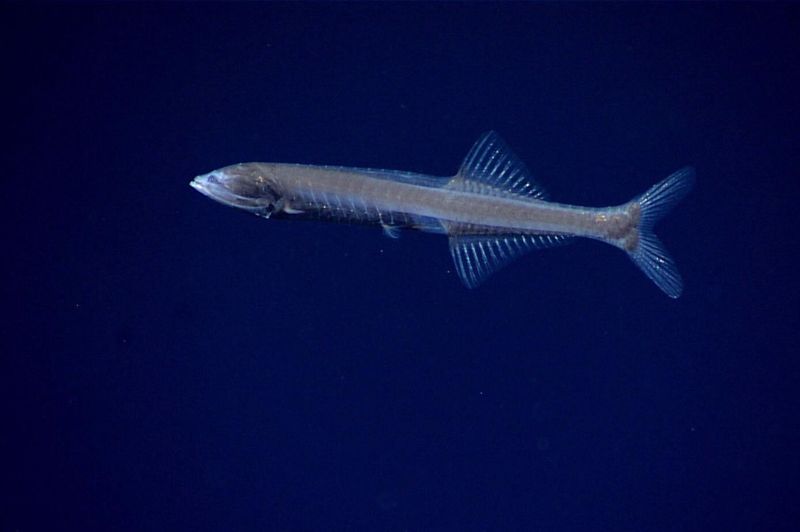
The Bristlemouth Fish, abundant in the ocean’s twilight zone, remains one of the most numerous vertebrates on Earth. Despite its small size, it plays a crucial role in deep-sea ecosystems. Equipped with bioluminescent organs, it uses light to communicate and attract prey in the dark depths.
Its adaptability to high-pressure environments highlights its evolutionary success. Feeding on tiny plankton and detritus, the Bristlemouth maintains balance in its ecosystem. This fish’s resilience in the face of deep-sea challenges makes it a subject of fascination and study for marine biologists worldwide.
Fangtooth Fish

The Fangtooth Fish, residing in the ocean’s deepest reaches, is a true deep-sea predator. Its large, protruding teeth and powerful jaws enable it to capture prey in near-total darkness. This fierce hunter can withstand pressure thousands of times greater than at sea level.
Despite its fearsome appearance, the Fangtooth is relatively small, yet it thrives where few can. Its ability to adapt to extreme depths and pressures showcases the incredible diversity of life beneath the waves, a testament to nature’s ingenuity in exploring every ecological niche.
Mudskipper
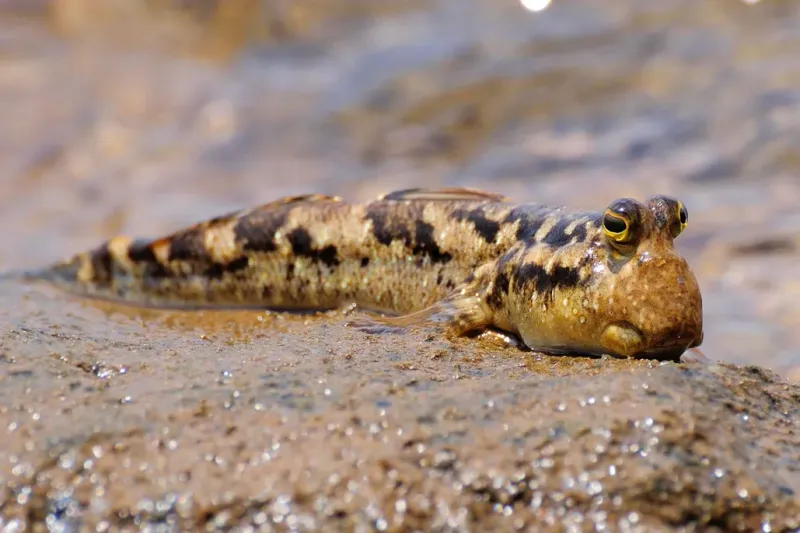
The Mudskipper, notorious for its terrestrial antics, thrives in intertidal zones where land meets sea. With fins adapted for crawling and eyes positioned for dual vision, it ventures onto land to forage and interact.
Its ability to breathe through its skin and gills allows it to survive in challenging environments. This amphibious lifestyle enables it to escape aquatic predators and exploit food resources onshore. The Mudskipper’s playful, quirky nature and adaptability to fluctuating tides make it a symbol of life’s versatility and a favorite among wildlife observers.
Coelacanth
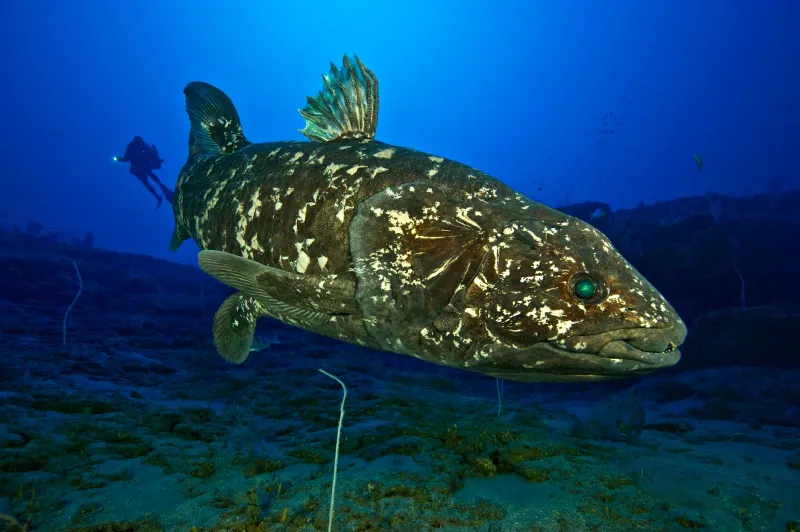
Long thought extinct, the Coelacanth resurfaced as a living fossil in the deep seas. This ancient fish, with lobed fins resembling limbs, intrigues scientists with its evolutionary significance. It dwells at great depths, hidden from modern predators and human exploitation.
The Coelacanth’s rediscovery in 1938 amazed the world, offering insights into vertebrate evolution. Its slow, graceful movements in the dark ocean attest to a lineage that has survived for millions of years. This extraordinary survivor embodies the mysteries and wonders of the marine world.
Archerfish
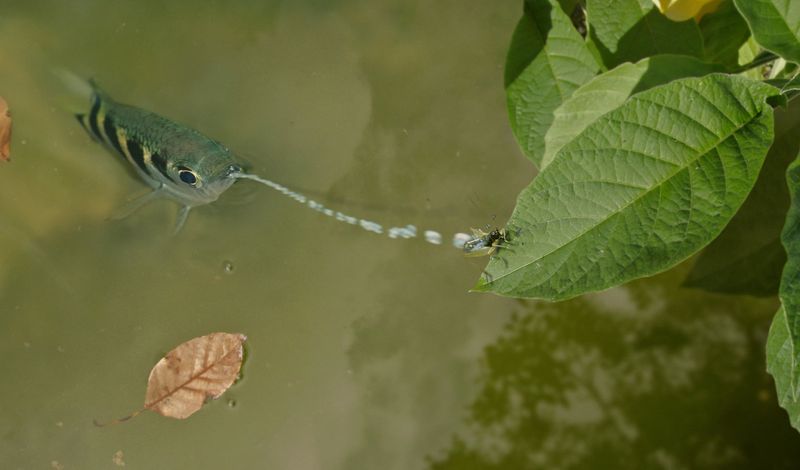
In the calm waters of Southeast Asia’s mangroves, the Archerfish displays remarkable hunting skills. Known for its ability to shoot precise jets of water to knock insects into the water, it thrives in the intricate dance of predator and prey.
This unique method of hunting requires keen eyesight and a practiced aim, making the Archerfish a fascinating study of adaptation and intelligence. Its reliance on mangrove ecosystems highlights the importance of these habitats for biodiversity. Enthusiasts admire the Archerfish’s precision and the intricate balance it maintains with its environment.
Blobfish

The Blobfish, often dubbed the ‘world’s ugliest fish,’ resides in the deep ocean, well adapted to high-pressure environments. Its gelatinous body, without a swim bladder, allows it to float effortlessly above the seabed, feeding on detritus and small creatures.
Despite its unflattering appearance out of water, the Blobfish thrives in its natural habitat. This fascinating fish symbolizes the unexpected diversity of deep-sea life, reminding us that beauty is, indeed, in the eye of the beholder, and adaptation takes many forms.
Goliath Tigerfish

The Goliath Tigerfish, a formidable predator, roams the waters of the Congo River. Known for its razor-sharp teeth and aggressive nature, it hunts fish and other aquatic animals with ferocious precision.
This apex predator thrives in the river’s fast currents, using its speed and power to overwhelm prey. Revered and feared by locals, the Goliath Tigerfish embodies the raw, untamed essence of Africa’s wild rivers. Its role as a top predator highlights the ecological dynamics of its habitat, a testament to nature’s balance and ferocity.
Electric Eel

The Electric Eel, with its electrifying ability, dominates the murky waters of the Amazon Basin. This fish generates powerful electric shocks to stun prey and defend against threats, a capability that sets it apart in the aquatic world.
Its elongated body and specialized cells make it a master of electrical navigation and communication. The Electric Eel’s unique adaptation fascinates scientists and inspires awe among those who encounter it. A symbol of nature’s innovation, it showcases the endless possibilities of evolutionary paths in a diverse world.
Saharan Tilapia

In the heart of the desert, the Saharan Tilapia thrives in conditions that seem inhospitable. This resilient fish can tolerate temperatures exceeding 40°C (104°F) and salinity levels that would be fatal to most aquatic life.
What makes the Saharan Tilapia remarkable is its ability to survive in isolated desert oases, where water chemistry can drastically change. These fish have evolved a unique physiology, allowing them to regulate their internal environment against external changes.
A fascinating creature, the Saharan Tilapia’s adaptation offers insights into life’s tenacity and the mysteries of evolution.

